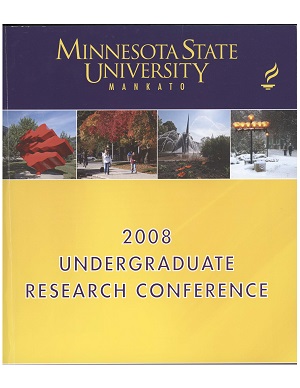Reconciling the Past in Minnesota: The Mankato Hanging Monument and the Duluth Clayton Jackson McGhie Memorial
Location
CSU 253/254
Start Date
22-4-2008 8:30 AM
End Date
22-4-2008 10:30 AM
Student's Major
History
Student's College
Social and Behavioral Sciences
Mentor's Name
Melodie Andrews
Mentor's Department
History
Mentor's College
Social and Behavioral Sciences
Description
My paper will examined how two Minnesota communities have begun to reconcile, in the public sphere, controversial events in their pasts. In the case of Duluth, a memorial was created. In the case of Mankato, a monument was removed. Fifty years after the bloody United States (U.S.)-Dakota Conflict and subsequent hanging of thirty-eight Dakota, a group of Mankato citizens led by Judge Lorin Cray succeeded in erecting a monument on the execution site. Many perceived the monument text to be derogatory and lacking a genuine historical context. The simple inscription read "Here Were Hung 38 Sioux Indians." In the spirit ofreconciliation, the monument was removed in 1971. Over the next twenty-five years, three new monuments would change the hanging site into more of a Native American memorial. I contrasted these events with the efforts of Duluth citizens to come to terms with a dark incident from their past. In 1920, three black circus workers were accused ofraping a local white woman. An angry mob stormed the city jail where they were being held and lynched the three men in front of a crowd of ten thousand residents of Duluth. The men were later found to be innocent of the perceived crimes. In the early years of this century, a movement began in Duluth to memorialize the three young men with a downtown monument. The memorial was completed in 2003. These events illustrated the contentious nature of the use of public space for monuments documenting controversial events and explore whose story will be told.
Reconciling the Past in Minnesota: The Mankato Hanging Monument and the Duluth Clayton Jackson McGhie Memorial
CSU 253/254
My paper will examined how two Minnesota communities have begun to reconcile, in the public sphere, controversial events in their pasts. In the case of Duluth, a memorial was created. In the case of Mankato, a monument was removed. Fifty years after the bloody United States (U.S.)-Dakota Conflict and subsequent hanging of thirty-eight Dakota, a group of Mankato citizens led by Judge Lorin Cray succeeded in erecting a monument on the execution site. Many perceived the monument text to be derogatory and lacking a genuine historical context. The simple inscription read "Here Were Hung 38 Sioux Indians." In the spirit ofreconciliation, the monument was removed in 1971. Over the next twenty-five years, three new monuments would change the hanging site into more of a Native American memorial. I contrasted these events with the efforts of Duluth citizens to come to terms with a dark incident from their past. In 1920, three black circus workers were accused ofraping a local white woman. An angry mob stormed the city jail where they were being held and lynched the three men in front of a crowd of ten thousand residents of Duluth. The men were later found to be innocent of the perceived crimes. In the early years of this century, a movement began in Duluth to memorialize the three young men with a downtown monument. The memorial was completed in 2003. These events illustrated the contentious nature of the use of public space for monuments documenting controversial events and explore whose story will be told.
Recommended Citation
Busby, Jay C.. "Reconciling the Past in Minnesota: The Mankato Hanging Monument and the Duluth Clayton Jackson McGhie Memorial." Undergraduate Research Symposium, Mankato, MN, April 22, 2008.
https://cornerstone.lib.mnsu.edu/urs/2008/oral-session-11/2



